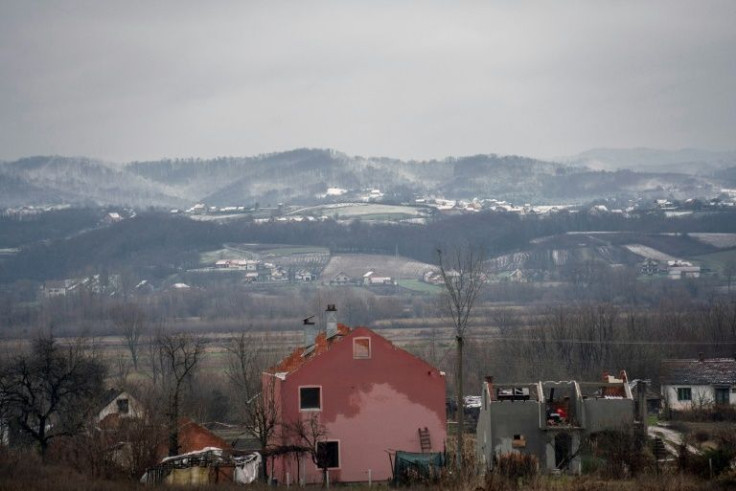Green Energy Transition And Metal Economy Will Take Off, If Lithium Willing

Industrial metals lost sheen after the 1970s when successive oil shocks rocked the global economy. However, after the Russian invasion of Ukraine on Feb. 24 they are rapidly returning to the center stage and the global metal economy has started hogging the limelight.
Russia's invasion of Ukraine wreaked havoc on the global commodities markets, including those for lithium as Moscow is a mineral powerhouse beyond the world's lightest metal, and produces titanium, platinum, nickel, and cobalt, among others.
Demand for lithium will increase by fivefold within a couple of years. According to BloombergNEF, roughly $14 billion of investment is needed to extract lithium resources and set up refining capacity by 2025.
Metals essential to the EV (electronic vehicle) industry are witnessing price shocks and paucity due to the Russian invasion, forcing global carmakers to switch to less dense Lithium Ferrous Phosphate (LFP) batteries. Nations, led by the U.S. and China, are making efforts to gain self-sufficiency in the vital metal for the clean energy transition.
LFP batteries got the attention of automakers due to lower cost, faster charging, and better safety profile compared with nickel-cobalt formulations.
.
China, a leader in the EV industry, widely uses LFP batteries and Tesla, the U.S.-based largest EV maker in the world, has come out with a choice of switching to LFP batteries instead of the usual nickel-cobalt-aluminum oxide cells for customers.
As automakers increase EV production, nations are realizing the need to wean themselves off Russian mineral imports and stand on their feet.
There is an obvious concern in the U.S. about China's dominant position in lithium processing as it sources nearly a third of annual imports from communist China.
China's LFP market share is expected to rise to 67 percent by 2025, up from 38 percent in 2020, the Swiss bank Credit Suisse said.
The global EV market penetration is expected to reach 45 percent of new passenger vehicle sales by 2030 and in 2021, EVs accounted for 9 percent of global passenger vehicle sales.
Senator Ron Wyden has proposed a $50 million grant program to support domestic mining and processing of lithium. The Oregon Democrat's push comes as in Southeast Oregon the U.S. is testing the waters with the nation's largest known lithium deposit.
President Joe Biden's administration has invoked the Defense Production Act (DPA) to accelerate the build-out of a domestic battery materials supply chain. Taking a leaf out of former President Truman's book, Biden on March 31 invoked DPA to put in place a domestic battery materials supply chain, focusing on energy transition metals like lithium, cobalt and nickel.
Truman used DPA to boost steel production in 1952 at the height of the Korean War and the Biden administration is using it to facilitate energy transitions from fossil fuels to renewables, where enabling metals like lithium act as vital ingredients.
"To promote the national defense, the United States must secure a reliable and sustainable supply of such strategic and critical materials," said President Biden, putting the thrust specifically on lithium, cobalt and nickel, which the US imports from China.
As the transition towards a clean energy economy gathers steam, demand for these materials may reach anywhere from 400 to 4,000 percent.
The U.S., however, has limited direct exposure to Russian lithium. Securing lithium and other vital minerals from friendly nations and boosting domestic production has become the top priority of the Biden administration with the use of DPA.
In last year's infrastructure bill, the administration had committed up to $3 billion to boost battery metals production.
To cement its position as a global leader in lithium production further, China has called for quicker development of a domestic lithium sector and has identified growth prospects in Qinghai, Sichuan and Jiangxi provinces.
After the U.S. troops' withdrawal in August 2021, lithium reserves in Afghanistan, the second-largest after Bolivia, came into the hands of China, the biggest investor in Afghanistan's mining industry.
The Taliban, its current leaders, are looking at India to secure financial and technological aid to help Afghanistan's mining industry which is rich with significant reserves of gold, rare-earth metals, talc sulfur, chromium, lead, zinc, gemstones travertine, gypsum and marble.
The prices of lithium have soared by 569 percent over the two years in Europe which does not want to part with its e-mobility revolution to end up in the slow lane of the global economy.
A total of 35 lithium-ion production projects are being unveiled in Europe. In Italy, the government is supporting with recovery funds to jumpstart auto major Stellantis' facility in the coastal town of Termoli, and FAAM Group, a division of SERI Group, is planning to develop its own gigafactories.
Ganfeng Lithium Co., one of the largest producers, said it is starting a huge expansion program, aimed at delivering an eventual capacity of 600,000 tons of lithium carbonate against its current production capacity of about 89,000 tons. South Korean battery makers, which earlier banked on nickel-cobalt-manganese batteries (NCM) are switching over to LFP.
To hog the limelight, researchers in the conflict-hit Ukrainian have claimed the country's eastern region holds close to 500,000 tons of lithium oxide, making lithium reserves in Ukraine one of the largest in the world. However, the claim, aimed at placing the country's President Volodymyr Zelenskyy as a major player in the clean energy transition, was not substantiated by the government and international mineral bodies.
With the metal economy, a new economic alignment that is less global and more ideological is taking place and lithium leads the charge.





